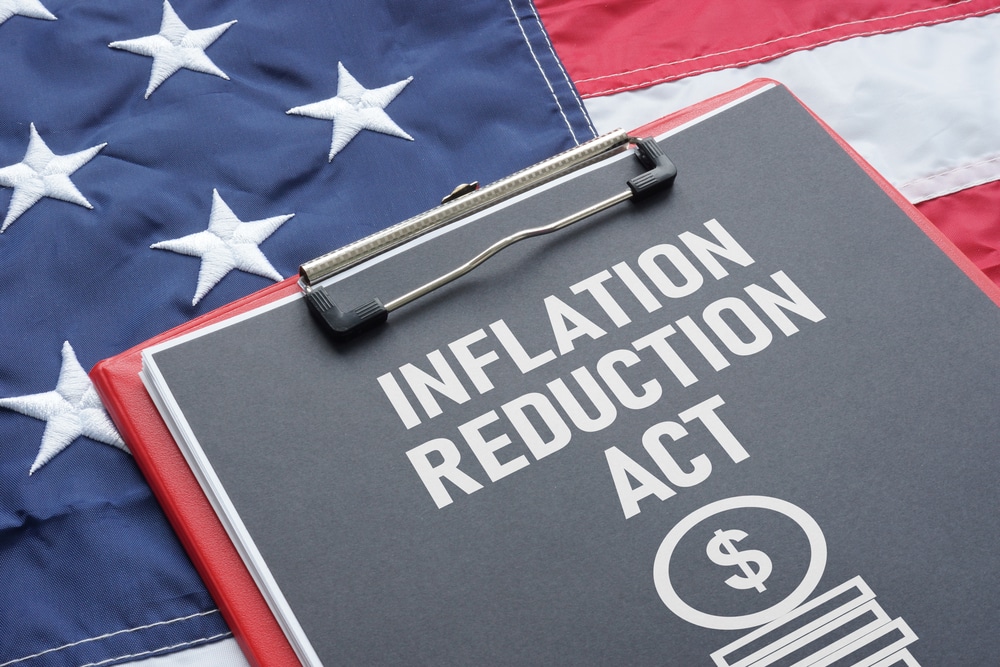Are you ready for the clean energy revolution? It’s here, and it’s changing everything.
As the most comprehensive climate protection legislation ever passed in the U.S., the Inflation Reduction Act of 2022 (IRA) is the impetus for widespread changes to the energy industry. Many experts believe the legislation is a huge win for the planet — and Americans’ wallets — thanks to measures that support cost-effective renewable energy and reduce greenhouse gasses.
When President Joe Biden signed the act, headlines touted the administration’s ambitious goal to slow climate change by slashing greenhouse gas emissions by over 40% by 2030. But how exactly will the act help the country reach that goal? Creating and using power is the single-largest source of greenhouse gasses, so the federal government is making it easier and more affordable for companies to invest in green energy technology and for homes and businesses to switch to efficient and practical power sources.
To help you understand what these changes mean for you, we’re reviewing the biggest impacts of the over 750-page bill and delving into how it’s affecting the energy sector. We’ll break down the main points of the legislation and what it all means for energy pricing and the future of power for our homes, businesses, and vehicles.
Increased Support for Wind and Solar Energy
The foundation of the IRA is a shift away from fossil fuels like gas and oil and toward renewable alternatives, like wind and solar power. Although previous green energy programs supported wind and solar investments with tax credits for one to three years, the updated rules extend the tax credit period to ten years.
The new incentives also make investing in renewable energy more advantageous by allowing commercial solar ventures to take the Production Tax Credit. This credit gives companies a tax break based on how much energy they produce. Previously, solar projects only qualified for the Investment Tax Credit, a one-time, 30% tax credit based on the cost of installing solar panels.
The IRA also supports more offshore wind projects. These include dedicated tax credits and increased support for the mining and manufacturing the materials necessary to construct wind turbines and other renewable resource hardware.
Expanded Domestic Manufacturing
Most energy-efficient technology is expensive, which deters many businesses (and homeowners) from switching. The import tariffs and duties drive up the costs because the U.S. relies on China for most solar panels, heat pumps, wind turbines, batteries, and other power equipment. Increasing domestic manufacturing capabilities can help solve this problem.
The government has set aside more than $60 billion for tax credits to help U.S. companies build manufacturing facilities for solar panels, electric vehicles, and more, as well as tax credits to support efforts to produce energy-efficient devices like heat pumps here at home faster. Lawmakers also added money from the Defense Production Act to encourage domestic companies to process critical minerals for renewable energy.
Other programs to support more onshore manufacturing directly affect the automotive industry; the government wants to increase domestic electric car production. Car makers can apply for grants to remodel existing facilities and loans to build new electric vehicle manufacturing plants to support cleaner production.
Making Clean Energy Accessible to More Americans
The ongoing climate crisis is a major concern for many Americans. Most are willing to make changes that support sustainability, like driving an electric or zero-emissions car or installing solar panels on their homes. Unfortunately, these choices typically cost more than low- to middle-income households can afford, especially with prices for everything from groceries to gas hitting record highs.
By passing the IRA, Congress approved funding to make clean energy alternatives more affordable and accessible for every family. Specific provisions include:
- Ten years of tax credits to encourage homeowners to make their homes more energy-efficient with solar panels, heat pumps, and electric HVAC and water heaters
- Grants to improve the energy efficiency of affordable housing
- Rebates for low-income homeowners to upgrade to electric appliances and make energy-efficient retrofits
- Tax credits of up to $7,500 for qualified individuals who purchase electric vehicles
These programs effectively reduce the costs of “going green.” They also motivate Americans to do their part to reduce greenhouse gases, conserve resources, and protect the Earth.
The Booming Green Energy Job Market
When the president signed the Inflation Reduction Act in August 2022, experts predicted explosive job growth in the renewable energy industry — a prediction that’s exceeding even the most modest expectations. Once President Biden signed the bill, the energy sector created more than 100,000 new jobs in the first six months, and the growth shows no sign of slowing down.
The green energy job market is booming thanks to more Americans channeling their concern about climate change into upgrading their homes and businesses to cleaner, renewable power. Solar power is quickly gaining traction across the country, with programs like the IRA solar credit in Chicago giving residents a reliable source of clean electricity and providing well-paying, stable jobs.
And it’s not just in major cities like Chicago. Nearly 100 active clean power projects nationwide are boosting local economies with over $94 billion in private-sector investments. These projects foster long-term employment growth and economic development, especially in underserved communities.
Does the Inflation Reduction Act Go Far Enough?
Although it makes great strides toward a greener future with lower energy costs, some environmental advocates and energy industry leaders wonder whether the IRA does enough to support the transition to renewable energy.
One criticism of the so-called climate act is that it doesn’t adequately reduce dependence on fossil fuels and contains loopholes that benefit the oil and gas industry. For example, Congress allows the leasing of federal lands for renewable energy projects but also requires allowing a certain amount of land for oil and gas projects. Environmental activists argue that this supports fossil fuel production and negates many of the positive aspects of the remainder of the bill.
Critics also note that the IRA incentivizes carbon capture and storage, meaning fossil fuel power plants can use federal funds to invest in technology that collects the carbon dioxide the plants emit and stores it underground. Although the process removes carbon from the atmosphere, it doesn’t do anything to stop the environmental and health effects of burning oil and gas, such as toxic air pollution and water contamination. Again, instead of making it less attractive to use fossil fuels, legislators made it possible to maintain the status quo.
Get Help Maximizing Inflation Reduction Act Incentives
Energy bills account for 10% or more of a business’s overhead. Investing in energy-efficient upgrades and contracting with the most affordable power source preserves the bottom line and reduces greenhouse emissions, but many companies don’t know where to start.
Navigate Power is an energy management consulting firm that helps organizations leverage energy contracting partnerships into wise, money-saving decisions. We put our in-depth knowledge of the energy industry to work to support businesses to minimize their carbon footprint and maximize their budgets.
If you want to reduce your commercial energy expenses and learn more about accessing government programs, call us at 1-800-541-1137 to schedule a free consultation.



